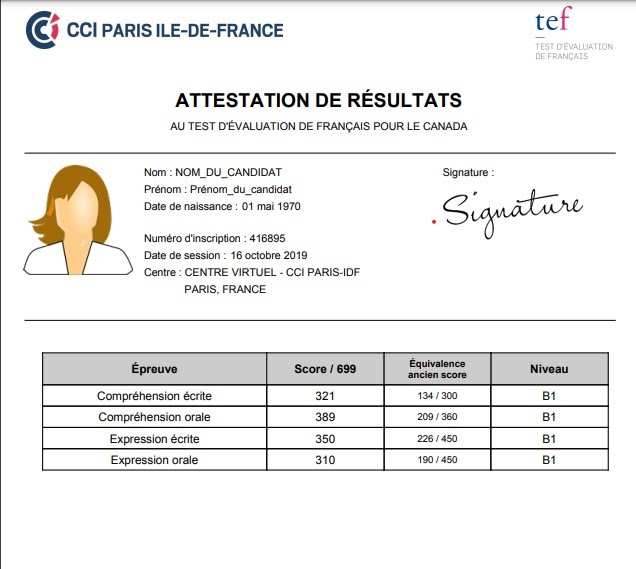All About the TEF Exam
Recognised by the French Ministry of Education and Department of Immigration, Refugees and Citizenship of Canada, TEF Exam… The post All About the TEF Exam appeared first on Leverage Edu.


Recognised by the French Ministry of Education and Department of Immigration, Refugees and Citizenship of Canada, TEF Exam is an international test used for assessing a candidate’s French proficiency. The exam is called the Test d’Evaluation de Français. It is often used for permanent residency and naturalisation in Canada, France and Switzerland. Much like IELTS and TOEFL, the objective of the TEF exam scores is to evaluate French language skills. Let’s look at the essentials of the TEF exam and how you may prepare for your language proficiency test.
Must Read: France Work Visa for Indians
What is TEF?
The TEF Exam (Test d’Evaluation de Français), introduced in 1998 by the Paris Ile-de-France Chamber of Commerce and Industry, is an international benchmark test that assesses French language proficiency. It can be used to demonstrate competence in academic areas, as well as in professional and mobility contexts. It takes about three hours to finish the entire test. You’ll have to do it all in one day at one of the recognised exam centres in your area. TEF Canada is currently available in two formats: paper-based and computer-based. Within 6-8 weeks, you’ll receive your results, which are usually valid for two years from the date of your exam. There are also set versions of TEF:
- TEF Canada is approved by Immigration, Refugees and Citizenship Canada for Canadian immigration and citizenship applications
- TEF Quebec is approved by the Immigration, Francisation, and Integration for Quebec immigration applications
Components of TEF Tests
TEF exam has 5 components to evaluate students on different segments. Here are all the components of the TEF test:
- Oral Comprehension (Listening): The Oral Comprehension (CO) test assesses your ability to understand spoken French from audio recordings.
- Written Comprehension (Reading): The Written Comprehension (CE) exam evaluates your ability to read and comprehend written content.
- Oral Expression (Speaking): The Oral Expression (EO) test examines your capacity to communicate with others orally.
- Written Expression (Writing): Written Expression (EE) is an exam that assesses your ability to communicate in written French.
- Vocabulary and Syntax: The Vocabulary and Syntax (LS) test evaluates your ability to correctly and appropriately use French vocabulary and grammatical structures.
Also Read: Sentence Correction for Competitive Exams
TEF Exam Structure
| Sections | Length | Content | Points | Format |
| Written Comprehension (Reading) | 60 minutes | 50 questions | 300 points | Multiple Choice |
| Oral Comprehension (Listening) | 40 minutes | 4 sections, 60 questions | 360 points | Multiple Choice |
| Written Expression (Writing) | 60 minutes | 2 topics | 450 points | Section A: Write the next part of an article (80 words), Express and justify your viewpoint (at least 200 words) |
| Oral Expression (Speaking) | 15 minutes | 2 topics | 450 points | In-person; Section A: Obtaining Information (5 mins), Section B: Making a case to convince someone |
| Vocabulary and Syntax | 40 minutes | 4 sections, 40 questions | 240 points | Multiple Choice |
TEF Exam Syllabus
- MCQs are asked based on a video recording in the listening test. The aspirant’s ability to analyse and grasp common words and expressions is tested in this section.
- Grammar and vocabulary are examined to determine a candidate’s skill in language structures. The questions will cover everything from spotting lexical problems to selecting appropriate language.
- A learner’s ability to read conversations or articles is assessed in the reading section.
- The speaking exam is optional; the examiner will conduct a 15-minute one-on-one conversation with you. The questions will range in difficulty from A1 to C2 on the Common European Framework of Reference for Languages (CEFR). To assess your speaking skills, the examiner will ask you to speak about any experience, place, or person.
- There is also the option of taking a written exam. You’ll have three activities to complete in this exam. The first job requires you to compose a brief message of no more than 120 words. The second assignment entails writing a 150-word letter, message, or note. The candidate must write two opinion articles of roughly 180 words apiece for the third assignment.
Also Read: TOEIC: Test of English for International Communication
How is the TEF Evaluated?
The TEF is graded on a seven-level scale, with level 0 being the most basic competency and level 6 being total fluency.
- Multiple-choice questions are used to assess written comprehension, spoken comprehension, vocabulary, and syntax.
- The written expression test requires you to write two texts about your daily life. Two separate, trained, and experienced proofreaders assess it.
- The oral expression test is made up of two role-plays that are based on real-life scenarios. Two separate examiners evaluate it: the test facilitator and a second evaluator who is based on the test tape.
Registration Process
All applicants have to visit the official website to register for the TEF exam, here are the step-wise registration process:
Step 1: Fill and sign the TEF Canada registration form will all columns be filled.
Step 2: Upload one passport size photograph on white background.
Step 3: Upload a copy of the passport (first and last page)
Step 4: Check the reference number of the NEFT payment
Step 5: There will be 5 days to register (counting from the time the email was sent), after which the seat will be offered to the next person on the waiting list.
Also Read: Duolingo English Test
TEF Exam & Proficiency Level
The TEF exam functions as a placement examination. According to the CEFRL, the Common European Framework of Reference for Languages, you are given a proficiency level based on your exam results. You can be placed in any of these levels:
- Level A1 (Level 1): Lower Beginner
- Level A2 (Level 2): Upper Beginner
- Level B1 (Level 3): Lower Intermediate
- Level B2 (Level 4): Upper Intermediate
- Level C1 (Level 5): Lower Advanced
- Level C2 (Level 6): Upper Advanced
How to Calculate the Results?
The results declarations are available in digital format. You will receive an email within 4 to 6 weeks after Le français des affaires has received and corrected your exam, providing a link that will allow you to access your secure digital area and acquire your statement of results. Below is an example of a certificate.

We hope that this blog has helped you gain essential information about the TEF exam. Are you planning to study in Canada but not sure where to start? Call us at 1800 57 2000 and book a 30-minute FREE counselling session with our Leverage Edu experts.
The post All About the TEF Exam appeared first on Leverage Edu.

![NYSC Releases 2024 Batch ‘A’ Deployment Letter [Stream II]](https://allschool.ng/wp-content/uploads/2021/09/NYSCjpg-640x360-1.jpg)



![West African Examinations Council (WAEC) GCE Second (2nd) Series Registration Form For Private Candidates 2022/2023 WASSCE Is Out Offline/Online [Check Out Instructions And Guidelines On How To Register]](https://micplustech.com/wp-content/uploads/2019/12/17264943_1445210792185245_7643945034402954664_n.jpg)




![National Examinations Council (NECO) June/July [SSCE] External Timetable For 2023/2024 Examination Exercise | Download NECO Timetable PDF File For Free Here](https://micplustech.com/wp-content/uploads/2020/02/images-33.jpeg)